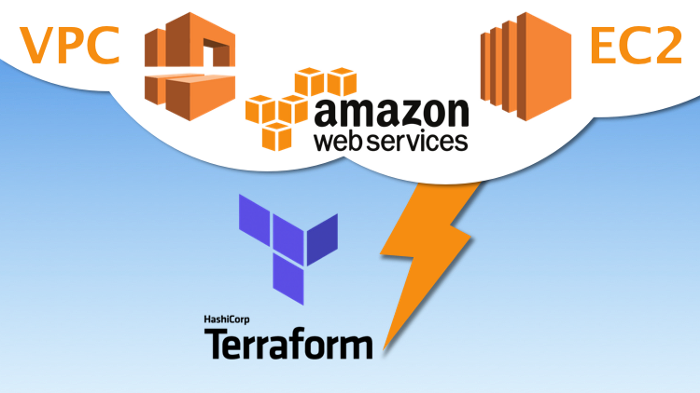Top 5 best IDE for Terraform
- The Tech Platform

- Oct 21, 2022
- 4 min read

What is Integrated Development Environment (IDE)?
IDE is a software application that provides facilities to computer programmers for software development. An IDE consists of:
Source Code Editor: A text editor that can assist in writing software code with features such as syntax highlighting with visual cues, providing language-specific auto-completion, and checking for bugs as code is being written.
Debugger: Utilities that automate simple, repeatable tasks as part of creating a local build of the software for use by the developer, like compiling computer source code into binary code, packaging binary code, and running automated tests.
Local Build Automation: A program for testing other programs that can graphically display the location of a bug in the original code.
Benefits of IDE:
It allows developing software in any programming language without spending much time on language syntax.
It has the ability to correct syntaxes, give a warning about memory leaks, assist in writing quality code, etc.
It has increased efficiency, where you can code faster with less effort, and its features help organize resources, prevent mistakes, and provide shortcuts.
It supports collaboration, in which a group of programmers can easily work together within an IDE.
It provides program resources that are easy.
What is Terraform?
Terraform is an infrastructure as a code tool that lets you build, change, and version cloud and on-prem resources safely and efficiently. Terraform allows users to define their entire infrastructure simply by using configuration files and version control. When a command is given to deploy and run a server, database, or load balancer, Terraform parses the code and translates it into an application programming interface (API) call to the resource provider. Because Terraform is open source, developers are always able to extend the tool's usefulness by writing new plugins or compiling different versions of existing plugins.
Benefits of Terraform:
Translate HCL code into JSON.
Support multiple cloud platforms.
Make incremental changes to resources.
Provide support for software-defined networking.
Import existing resources to a Terraform state, and
Lock modules before applying state changes to ensure that only one person can make changes at a time.
Top 5 best IDE for Terraform
1. Brainboard
Brainboard is a visual cloud management solution that allows cloud & network architects, DevOps engineers and SREs to centralize the management of the cloud infrastructure by:
Designing in real time and collaboratively cloud architectures,
Automatically generating the Terraform code from the blueprint,
Integrating with the existing repos like Gitlab and Github,
Deploying the infrastructure with one click,
Create repeatable templates to be used without reinventing the wheel every time.
Advantages:
Design, terraform code, and deployments
Collaboration and automation are Brainboard’s key pillars
Supports private and public repositories
VSCode editor embedded inside your terraform code
All-in-One readme, templates, and deployments
Plugins are on the way with the new CICD Engine coming up
2. VScode
Visual Studio Code is a streamlined code editor with support for development operations like debugging, task running, and version control. It aims to provide just the tools a developer needs for a quick code-build-debug cycle and leaves more complex workflows to fuller featured IDEs, such as Visual Studio IDE.
Advantages:
Terraform capability in VScode is good with tons of modules that help visualize your layout and how modules interact.
VSCode has a native terminal that runs from your system terminal so if you have ZSH configured with a bunch of modules it all just works.
Disadvantages:
The VScode terraform plugins (all of them) only add syntax support, and maybe predefined snippets.
3. Clojure
Clojure is a high level, dynamic functional programming language. It is designed, based on the LISP programming language, and has compilers that makes it possible to be run on both Java and .Net runtime environment.
Clojure has the following high-level key objectives as a programming language.
It is based on the LISP programming language which makes its code statements smaller than traditional programming languages.
It is a functional programming language.
It focuses on immutability which is basically the concept that you should not make any changes to objects which are created in place.
It can manage the state of an application for the programmer.
It supports concurrency.
It embraces existing programming languages. For example, Clojure can make use of the entire Java ecosystem for management of the running of the code via the JVM.
4. Atom
Atom is a free and open-source text and source code editor developed by GitHub (Atom – A Hackable Text and Source Code Editor for Linux). Its developers call it a "hackable text editor for the 21st Century" (Atom 1.0). Atom enables users to install third-party packages and themes to customize the features and looks of the editor, so you can set it up according to your preferences and with ease (Atom). It is as welcoming to a newbie as it is for an experienced developer.
5. Pycharm by jetbrains
PyCharm is a dedicated Python Integrated Development Environment (IDE) providing a wide range of essential tools for Python developers, tightly integrated to create a convenient environment for productive Python, web, and data science development. PyCharm provides smart code completion, code inspections, on-the-fly error highlighting and quick-fixes, along with automated code refactorings and rich navigation capabilities. PyCharm’s smart code editor provides first-class support for Python, JavaScript, CoffeeScript, TypeScript, CSS, popular template languages and more. Take advantage of language-aware code completion, error detection, and on-the-fly code fixes.
Advantages:
Better GitLab Integration
The Pycharm plugin adds full language support.
It can handle CloudFormation, Ansible, Markdown, and Python.
Some of the plugins are free. It fills in the required attributes and you can hit the code complete (ctrl space) to see all the other attributes to add specific to that resource.
Disadvantages:
Pycharm is not free.
The Tech Platform




Comments